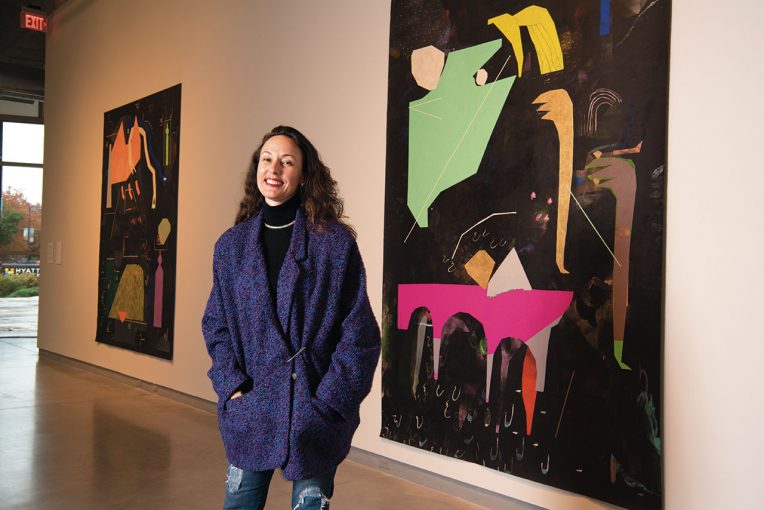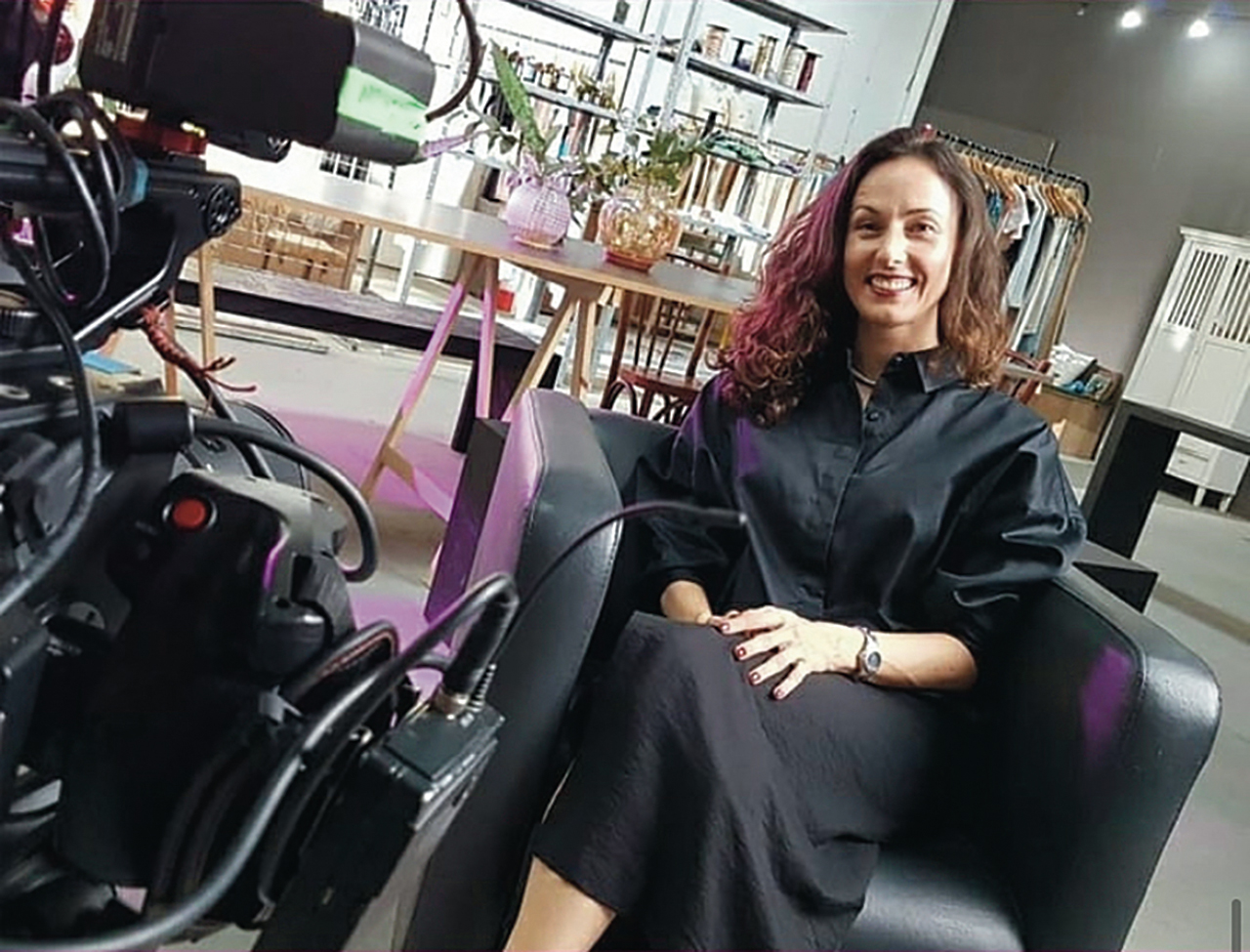Alone in the typically bustling, but now, eerily quiet city center of Porto Alegre, Brazil, Illinois State University graduate student Rochele Gloor hurried past shuttered storefronts carrying a fresh supply of surgical masks—and iridescent fabric.
It was March 2021, and most businesses were closed amid another surge in coronavirus (COVID-19) infections and deaths across Brazil. Gloor, however, was continuing her work as art director and costume designer for a five-part television documentary titled Tramas da Moda (FashionNet), about the storied history of fashion in the state of Rio Grande do Sul.
Gloor’s trip to the city center for ”essentials” included ducking under a partially-opened steel roll-up door to pick up fabric and sequins from a local shop owner; the materials would be used to create a blouse for an upcoming documentary episode. Gloor also stopped in a nearby pharmacy to purchase masks for herself and beauty products for the documentary’s models.
Appears InWithout a makeup artist or seamstress available, the documentary’s filmmaker turned to Gloor, one of three remaining members of the pared-down technical crew.
“They relied on me because I have good taste and I know how to be flexible and to think about how to solve problems quickly and with beauty,” Gloor quipped. She fit the iridescent blouse using clothes pins while also applying makeup to the model wearing the makeshift garment.
“Being part of an academic field now—I consider myself lucky to be able to explore all these things that are happening now.”
Rochele Gloor
Gloor shared her experience a week later via Zoom with classmates, most of whom were more than 5,000 miles away, enrolled in Illinois State’s creative technologies graduate program. Nearly a year earlier, Gloor had been admitted to graduate school and accepted a graduate assistantship with University Galleries following a video interview with Director and Chief Curator Kendra Paitz, MBA ’06, M.A. ’11.
“It was right at the beginning of the pandemic. It was the first interview I had to conduct by Zoom,” Paitz recalled. “And it was the moment where we had our first grocery delivery of the pandemic coming and my phone kept lighting up.”
Technological distractions aside, it became clear to Paitz that Gloor was a strong candidate. Gloor had eight years of experience working with prominent designers in the New York City fashion industry before returning to Brazil where she founded a sustainable clothing line, RGLOOR, in 2016.
As a fashion designer and digital artist, Gloor sought to pursue a master’s degree in a related field. She became aware of Illinois State’s Creative Technologies Program through her boyfriend, Guilherme Rodrigues, a prospective music conducting master’s student.
With classes scheduled to begin in fall 2020, Gloor packed her bags. But, just days before her scheduled departure, Gloor received word that—due to pandemic-related travel restrictions—she couldn’t leave.
Forced to defer her enrollment until spring, Gloor once again attempted to travel to campus; but, again, her efforts were in vain. Frustrated, but refusing to accept defeat, Gloor opted to begin graduate courses online from Brazil.
“It was necessary that I started even to show that, ‘Yes, I am really interested in doing this,’” Gloor said. “As it turned out, I was learning so many new things. And, I was meeting people, doing group projects. It was amazing. And all my professors were so helpful.”
Gloor managed to balance her first semester of online grad school at Illinois State with work on the Brazilian fashion documentary series. Then, in July, Gloor finally boarded a plane for the U.S.
“When I arrived, it was a real relief,” Gloor recalled.
In Normal, Gloor began her graduate assistantship with duties including graphic design projects, event and exhibition setup, assisting with transitioning to a new digital database, helping create an interactive map of campus artwork, and interacting with visitors.
“She has become such an integral member of the team already,” Paitz said.
Paitz and Gloor hope to collaborate on a project to increase virtual experiences related to the University Galleries’ exhibitions and collections.
Additionally, through a Friends of the Arts grant, Gloor is exploring zero waste fashion in a virtual artistic environment utilizing Clo3D, a software program that enables designers to create virtual, true-to life 3D garment visualization.
By comparison to traditional garment development, Gloor said simulation technology such as Clo3D “can diminish lead times, reduce waste, and cut costs.” Additionally, Gloor sees artistic applications for garment simulation software, such as digitally dressing social media influencers or designing outfits for video game characters.
“Digital creation has no limits for artistic ideas,” Gloor said. “You can do whatever you have in your mind.”
Gloor believes there is an intrinsic relationship between humans and nature, and now, technology. She plans to marry technology, humanity, and art through an upcoming independent study with Associate Director of Creative Technologies Dr. Roy Magnuson ’05 focused on development of a virtual reality meditation room that incorporates graphics, colors, and sound design.
“I want to expand the aesthetics of meditation,” Gloor said. “I want to create this amazing thing for people to be immersed and try to really improve their lives.”
Gloor, who has demonstrated perseverance in the face of unexpected challenges, also sees unprecedented opportunities at this moment in time—for herself, and for humankind.
“It’s been difficult to live, in a certain way, but at the same time, we are living during a very interesting era of many innovations. Being part of an academic field now—I consider myself lucky to be able to explore all these things that are happening now.”


